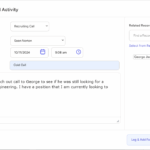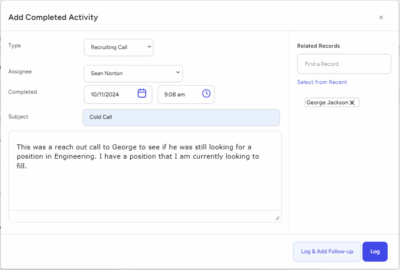In early 2019, the Association of American Medical Colleges (AAMC) confirmed that America will face a critical shortage of clinical providers by 2032. The news forced a collective sigh from healthcare recruiters around the country, who were already facing historic unemployment levels for non-clinical teams.
With shortages of physicians, nurses, and midlevels looming, one thing is clear; the healthcare industry faces significant talent gaps and workplace shortages that will likely only get worse. Reports show that healthcare providers are planning to continue hiring, with no layoffs anticipated anytime soon.
Finding the best candidates requires a think-outside-the-box strategy. Here are suggestions for filling roles and beating odds that are clearly not in a recruiter’s favor.
Finding Healthcare Talent in 2023 and Beyond
To make the talent war more intense, healthcare providers report an overall turnover rate of about one-third. In the current recruiting climate, any turnover exacerbates a problem felt from the smallest ambulatory facility in a rural setting to the largest teaching hospital in a metropolitan area.
The techniques recruiters and hiring teams should use, no matter the work environment, should include these six suggestions.
1. Start early with campus recruiting.
One big problem in healthcare recruiting is that there simply isn’t enough talent with the proper training to put them to work. Since many healthcare roles require advanced degrees and certifications, it makes sense to focus on identifying promising talent early on.
The job of the recruiter at this stage is to help nurture these prospects in order to fill their hiring funnel as part of a long-term strategy to bring new talent into the healthcare field. Recruiters and hiring managers can serve as mentors at this stage to help students determine their career paths. Look for opportunities to speak to college classes and make sure your organization offers internships to these bright young adults. A healthcare internship will help students prepare for their professional career and help them hit the ground running. It’s also a great opportunity for a healthcare organization to treat promising future hires in a way that inspires and earns loyalty.
Ultimately, these efforts will help create a candidate pipeline to make sourcing easier down the road.
2. Improve your assessment and hiring process and go mobile-first.
In a job-seeker’s market, candidates may grow disinterested in long back-and-forths or onerous, clunky skills tests. With 69% of healthcare providers worried about competition for talent from other healthcare providers, it’s a good idea to streamline your process via cloud technologies.
Look for application and hiring providers with simple and intuitive processes that emphasize a mobile-first strategy. Why is this important? 78% of millennials apply for jobs on their mobile devices. Having a responsive career portal that translates well to mobile devices is just the first step toward reaching this audience. If your healthcare organization is concerned that competitors are encroaching on your talent, the answer is to create a consistent, simple, and faster candidate screening process.
While proper skills assessments are critical for ensuring that you’re only considering the best-qualified applicants, if those tests aren’t smoothly integrated with the rest of the hiring process, it can turn away the candidates you want to apply, too. Make sure you’re using a top-end assessment tool like SkillSurvey, ideally one that’s integrated with your applicant tracking system, to filter out unqualified candidates while not driving away qualified ones who are frustrated with the process.
3. Know the best job boards for healthcare.
Job boards have always been a great resource for healthcare recruiters, but they aren’t all created equal. Working smarter by sourcing from healthcare-focused job boards will help recruiters improve their chances of finding the right passive and active job candidates. Some of our favorite healthcare job boards include:
- Health eCareers offers career advice as well as a robust list of jobs for high-end clinical professionals. If your healthcare organization isn’t listed here, now is the time.
- JAMA Network is a good resource, particularly for specialist talent.
- Medical Jobs lists medical jobs that don’t require extensive training, from dental hygienists to ultrasound technicians.
4. Branch out to other professions.
It makes sense to work with professionals in other fields that could crossover to healthcare, especially when you consider that the competition is already scouring the field searching for talent. Stepping outside your comfort zone into fields where you may not have expertise is a good way to freshen a stale pipeline. For example, highly trained military veterans returning to civilian life are great targets outside traditional healthcare channels.
5. Offer better compensation and benefits than your peers.
It’s a job-seeker’s market, so sometimes there’s no getting around this. The majority of healthcare hiring managers (63%) report they have made their compensation packages more attractive in order to stay competitive.
If you can’t afford to pay more, consider what else you can offer in terms of compensation or perks that would fit your brand. This could include:
- Sign-on bonuses.
- Relocation assistance.
- College or medical-school debt assistance.
- CME allowance or paid conferences.
- Free medical or dental insurance.
- Paid travel allowance, a car, or a mobile plan.
- Perks like a gym membership or free lunch.
- Increased maternity leave or caregiver time.
- Increased vacation, PTO, remote work, or flex time.
6. Hire from within.
Promotions are often a great way to find skilled talent that already knows your organization, its mission, and has a proven track record of success. This will serve to potentially fill the immediate hiring needs of an organization while also building a positive cultural environment where employees are rewarded for their efforts. This, in turn, is something that recruiters can sell to potential new job candidates to entice them to join the team.
7. Use a better Applicant Tracking System (ATS).
Today’s candidates demand more control in the hiring process. That’s why tomorrow’s ATS software should have intuitive features, like a screening solution that allows applicants to check back on their status, complete skills assessments, complete EEO information, sign-off on background checks, offer letters, and more.
One thing that can help improve the hiring process is to use a great ATS like Top Echelon Software.
Most healthcare recruiters are well aware of the shortages of physicians, nurses, midlevels, and other highly skilled healthcare professionals. That’s exactly why healthcare recruiting today should focus on the long game. Having the right tools to keep your talent pipeline full is crucial to creating a candidate experience that will pay off in the long run. Top Echelon Software has the tools to help you stand out to applicants in a positive way. Contact us for a free demo today.








